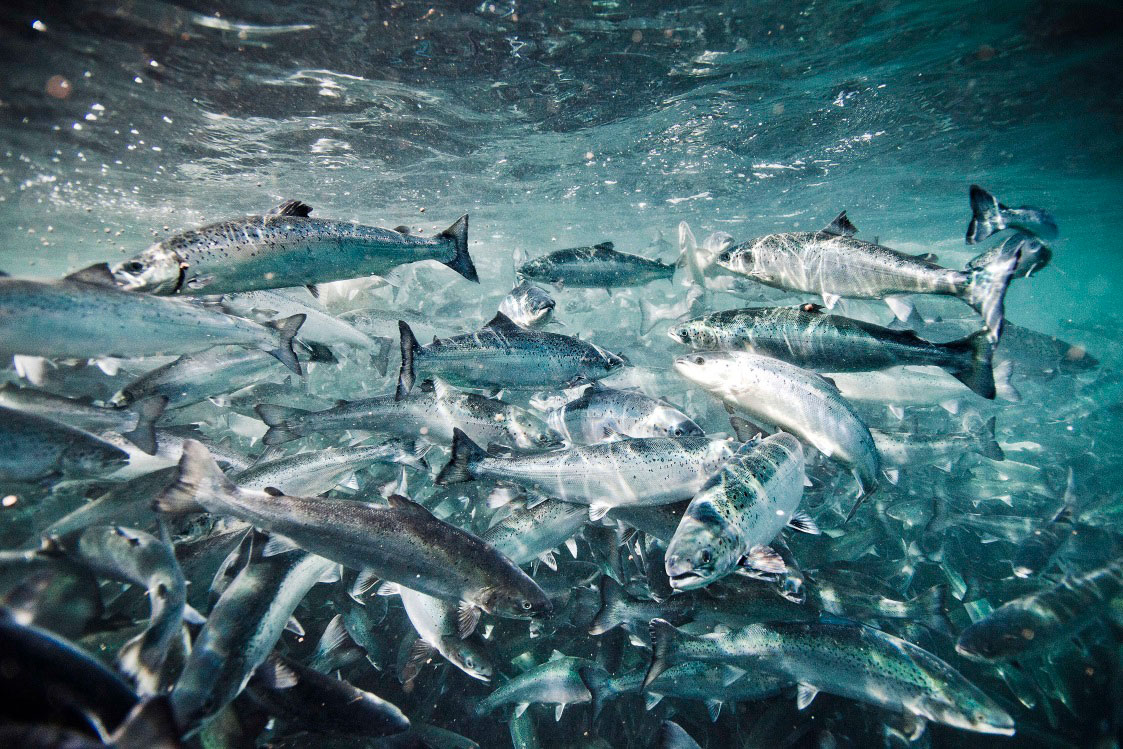
Sorting through the noise in the farmed vs. wild debate
July 29, 2021
By Dr. Kenneth Cain
Activists overlook the role of commercial harvesting in decimating wild fish populations and the role of aquaculture in restoring them, says columnist

I am often asked to explain the issues regarding hatchery or farmed fish and the concerns over how they may impact wild salmon populations in the Pacific Northwest. The public is largely unaware of the complexities; many believe what they hear from the media. Wild, hatchery, and farmed fish issues are multi-facetted and there is seldom a clear and concise answer regarding how each impacts the other.
How did we get here?
What do we mean by “wild” salmon? When First Nation and native American people inhabited the coastal areas, they saw salmon as sacred and took what they needed for subsistence and ceremony. The oceans, rivers, and streams that were essential for salmon to survive were not impacted by human activity. When settlers arrived along the west coast from California up to Alaska, the abundance of salmon allowed excess exploitation of this resource. Overfishing during the 1800s began to wipe out what earlier seemed like an endless supply of wild fish and set in motion the shift from wild fish. This was compounded by habitat destruction through mining, logging, and hydropower, which to this day impact rivers and natal streams that salmon and steelhead rely upon to complete their life cycles. Now, we live in a much different world and most of us have lost the concept of what “wild” means, and in much of this region truly “wild” populations of salmon are rare.
What are the issues?
Salmon and steelhead populations are managed for many purposes, including sport fishing, commercial fishing, tribal harvest, and even recovery of endangered and threatened species. Hatchery-reared fish are primarily used as tools to enhance fisheries or address conservation goals. This has led to controversy and not everyone agrees that hatchery fish are a benefit or should play a role in fisheries management. Beyond this, net pen farming of Atlantic salmon along the Pacific coast is viewed as another threat to wild fish, and anti-salmon farming groups have had their influence on government policy regarding salmon farms. A clear example is the recent termination of salmon farming in the Discovery Islands in British Columbia.
Whether farming fish for consumption or restoration purposes, someone is likely to have an opinion about how wild fish are affected. The concerns often center around arguments that farmed fish will dilute wild genetics, transfer disease, compete for habitat, or escape into the wild and establish invasive populations -— concerns that have followed net pen farming of salmon for years.
For the most part, scientific studies do not support the claims made by the anti-salmon farming groups regarding these risks nor the idea that farmed fish will lead to the extinction of wild fish along the coast (see related repot on previous page). However, we know for a fact that wild salmon are impacted by habitat change and overfishing.
Opponents of aquaculture fail to acknowledge that given the anthropogenic changes that have occurred, it is likely that only remnant populations of salmon would exist without hatchery mitigation. There may be exceptions in some systems, but the bottom line is that as long as we manage for substantial harvest of salmon and steelhead, there will be a need for hatcheries to produce them. In fact, even in Alaska where finfish aquaculture is banned, there is a private program that releases billions of hatchery salmon annually to directly support the commercial fishery in the state.
Are there solutions?
Common sense would tell you that rebuilding fish populations along the coast would require us to limit overfishing and commercial harvest of wild salmon and steelhead. Salmon farming increases the supply of salmon to the market and augments reduced harvest from the wild. Clearly, this is not a popular subject for some groups, and it is easier to blame salmon farms and call for their removal. And instead of calling for restrictions on commercial fisheries harvests, wild salmon marketers even capitalized on the farmed-versus-wild debate by re-branding their product as a “luxury” compared with readily available farmed salmon. So, instead of using aquaculture as the means to solve wild fish problems, we have made it the scapegoat and blamed aquaculture for a problem caused by a multitude of factors that began over a century ago.
In the absence of the pristine environment that existed in the 18th century, we cannot expect wild salmon to persist at numbers anywhere near what they were. Given the myriad of issues and the unwillingness to change how we manage harvest fisheries for salmon and steelhead, the best option remains to utilize hatchery fish as tools to support fisheries managers and produce farmed salmon as sustainably as possible.
Ken Cain is a Professor at the University of Idaho who teaches courses on Fish Health Management, Aquaculture, and Wild/Hatchery Fish Interactions. Ken’s passion for fishing led him to a lifelong career in aquaculture and research focused on fish immunology and vaccine development. He continues to be motivated by a desire to solve problems that challenge the industry and impact fishery resources.
Advertisement
- Offshore farming: It’s all about economics
- Norway, Scotland offer advice to Canada on B.C. farmed salmon industry





